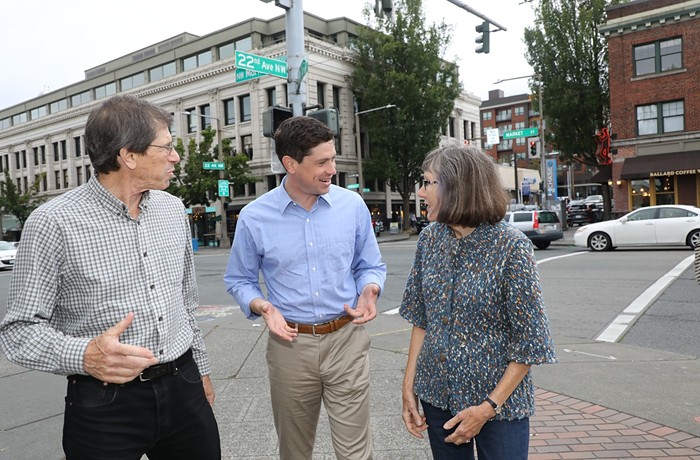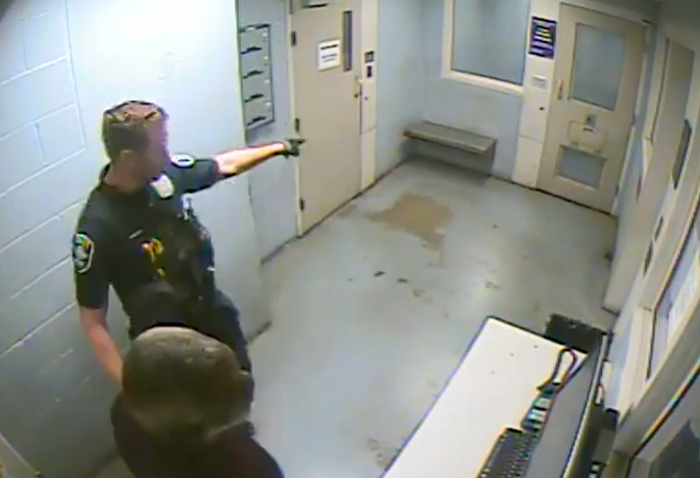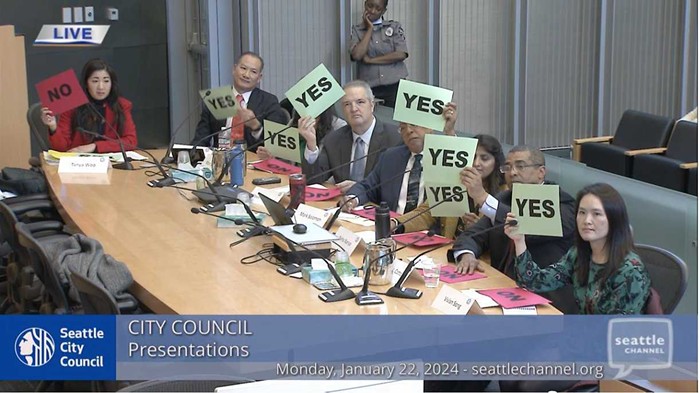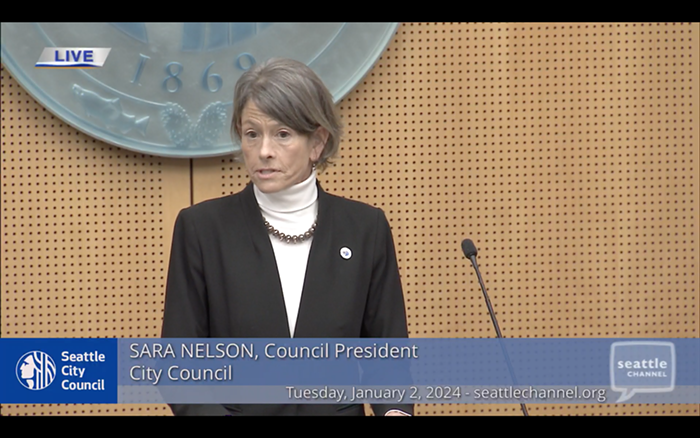
Ever since 55 percent of King County voters approved a 2012 levy to build a $210 million replacement for the current juvenile detention center, the county has planned on building a new facility with 154 beds. Now, however, after three years of protests calling for the county to stop building the jail, the county is reducing the number of beds to about 114, a reduction by roughly one fourth, according to King County Council member Larry Gossett.
"Without the kind of [protest] challenges, street heat, whatever you want to call it," Gossett said, "it's possible that we would not have gone that low at this time. Even though our commitment is to get it down as low as possible."
A spokesperson for King County said she couldn't confirm the number, but indicated the county is poised to make an announcement about the detention center this week.
County officials had previously said that they needed 154 beds to keep up with population growth. The county has been a leader on reducing its juvenile detention population, roughly halving it over the past decade. At the same time, racial disproportionality has increased. About 10 percent of King County's juvenile population is black, but in 2013, black youth made up about 43 percent of those incarcerated. In 2014, that proportion shot up to 51 percent.
The reduction in planned detention beds is "one minor victory on the way to larger systemic change," said Senait Brown, co-chair of Ending the Prison Industrial Complex (EPIC), one of the groups leading the charge against the jail. It looks like the group had some inside information, because on Saturday, at the end of a daylong "People's Tribunal" held at Seattle University, organizers predicted the county would decrease the number of detention beds by 40.

Hundreds of people packed into a campus ballroom for the event to talk about institutionalized racism and break in and out of workgroups. Brown stressed that the participants don't exactly have one vision for a specific alternative to the detention center. "It's not necessarily a programmatic thing," she said. "It's not a think tank list. It's an actual process that centers and humanizes communities of color."
"That people's plan is really embarking on that process and having ownership," Brown said. "We're doing what the county should have done, as government that is supposed to represent all in an equitable way, which is be in relationship and accountability with the people who've been in the system."
Dustin Washington, another EPIC member, suggested the county should invest the $210 million in a culturally relevant healing center and "cooperative economic projects for youth of color who've been left out of the economic mainstream."

Gossett, who made a brief appearance at the Saturday event, along with Council Members Sawant and O'Brien, told me today he largely agrees: "[Community involvement] definitely has to become more diverse, more representative, particularly of the population groups that are housed in the King County Juvenile Detention Center."
I asked whether the number of detention beds planned for the new facility could go even lower. "I don't know, maybe" Gossett said. "We've made a lot of changes and reforms throughout this city because of street heat."
Not at the tribunal was King County Superior Court presiding judge Susan Craighead, who last month called the movement against the detention center a "cancer growing on the City of Seattle's body politic." In a striking reversal, in a speech that same month, she struck a contrite tone, saying, "We are sorry we have not been listening well enough to our community."
Speaking by phone today, Craighead said, "My concern, and I stand by it, is the intimidating tactics the protesters have used are a very dangerous for democracy." Specifically, she said, shouting down county council members.
"On the other hand," the judge said, "they have handed us a gift... making us think, can we change the paradigm? We as a county are rethinking what we can do."
"You've got to start thinking about zero detention," she continued, "the same way as 'What if we wiped out smallpox.' By setting a goal that right now seems out of reach, you make a lot of progress toward it."
State laws pose significant obstacles, Craighead said, because funding restrictions "require a conviction to get kids the services that they should have had long before they committed a crime."
"I wanted to go to the tribunal," she added, "but the security people were all worried. I regret that I didn't go, but with the information I had, I made the wisest decision."
Juvenile Court judge Wesley Saint Clair said security officials also warned him not to go. But he went anyway, and told me he didn't feel remotely threatened. When I asked him whether he thought the people around him were a "cancer on the body politic," he said, "I'm offended that you even me asked that. I really am."
Not long afterward, the event concluded with a festive group dance session.
"Now, I'm not a [prison] abolitionist," Saint Clair said. "I'm not going there. In my role as a judge, there are times I need to do things to protect society from someone."
But, he asked, "Does it always have to be in the confines that we currently have constructed? I think there are some other opportunities out there, were we courageous enough to go there."
This post has been updated.


















